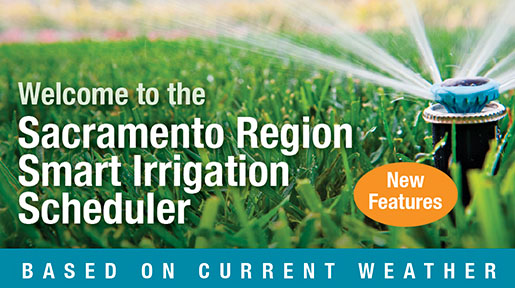Practical tips and tricks for a healthy water-wise garden
By Debbie Arrington
Guest Writer
 Experienced gardeners know timing is everything; when a task is done – planting, pruning, feeding, etc. – makes all the difference in how a plant grows.
Experienced gardeners know timing is everything; when a task is done – planting, pruning, feeding, etc. – makes all the difference in how a plant grows.
This year represents a rare window of gardening opportunity. Due to bountiful rain, this is a great time to set your garden up for success for years to come – no matter the weather.
The greater Sacramento area benefited from a wet winter and spring. According to the National Weather Service, the station at Sacramento State University recorded more than 26.6 inches this water year (through May 6); average for that period is 18.3 inches. Our water year (which started Oct. 1) is 145 percent of normal.
Such abundant rainfall gave soil a deep and lasting soak. Besides refreshing trees and shrubs, that extra moisture will help new transplants get off to a healthy start, put down deep roots and become “established” – well-rooted and able to withstand stress. That includes the stress of future droughts.
“The best way to prepare for lean water years is prepare when we have rain,” says Greg Gayton, garden guru for Green Acres Nursery & Supply. “People think, ‘The drought is over!’ But no, it isn’t; plants are still recuperating (from three years of drought) and we still have to prepare for future drought.”
Concentrate on helping your plants stay healthy and happy; like people, healthy plants better withstand stress and challenges.
Gayton recommends slow-release organic fertilizers such as compost, worm castings or organic blends; those fertilizers feed the soil as well as plants and encourage slow, consistent growth – important for resistance to pests and disease.
More water is not necessarily the answer for a failing plant, Gayton notes.
“The biggest reason plants die? Too much water,” he says. “Especially citrus; most problems can be traced to too much water. But it’s true of all naturally drought-tolerant plants including California natives and Mediterranean plants. People see drooping foliage or yellow leaves, they give those plants more water, but their roots may already be waterlogged. They don’t need more water; their roots are drowning. Too much water causes flowers to drop off or disease problems, too.”
The solution? “Check soil moisture before you turn on irrigation,” he says. “Use a soil probe or moisture meter. Don’t water if you don’t need to.”
When you water, do it in the early morning. That cuts down on evaporation loss as well as the spread of fungal disease. (Foliage has a chance to dry out in the afternoon sun.)
Don’t forget to mulch. Organic mulch such as wood chips, straw or dried leaves helps soil retain its moisture while keeping plant roots comfortable in heat or cold. Organic material such as mulch and compost also feeds soil microbes, essential to healthy soil and plants.
Consistent soil moisture not only helps plants but soil biology, the key to a healthy garden, Gayton explains. “When you have good soil biology – with lots of soil microbes – you can use less water and fertilizer. Plants with good soil biology around their roots can take high heat and have less water requirements. Healthy soil makes for healthy plants. It works all the way around.”
Drip irrigation puts water where plants need it most – at the roots. But make regular checks on driplines and emitters; are they really in the right place?
The most common drip irrigation mistake: Emitters in the wrong place (or not enough), Gayton says.
“Emitters need to be at the dripline (the farthest reach of a plant’s foliage); that’s where the roots are,” he explains. “This is a problem especially with trees or large shrubs. As plants grow, their roots go farther out. But people put one emitter next to the trunk, and never move it. Next to the trunk, that’s not where the roots are unless it’s a very young plant. And healthy plants don’t have roots on just one side; you need multiple emitters around the entire plant’s dripline.”
Watering at the dripline also trains the plant to grow its roots further out; that’s more insurance against drought stress.
Driplines are easier to install and maintain if installed along with the landscaping, Gayton notes. If installing a new garden, consider raised beds.
“Raised beds are the way to go,” he says. “Raised beds or containers are best because you control the soil – you can have the perfect loamy soil with good drainage. You control soil moisture. You have fewer if any weeds. You control everything. You have fewer problems overall.”
Top 3 Timing Tips for Healthy Plants
|
Debbie Arrington is a longtime home and garden reporter and co-author of the blog Sacramento Digs Gardening: https://sacdigsgardening.californialocal.com/

